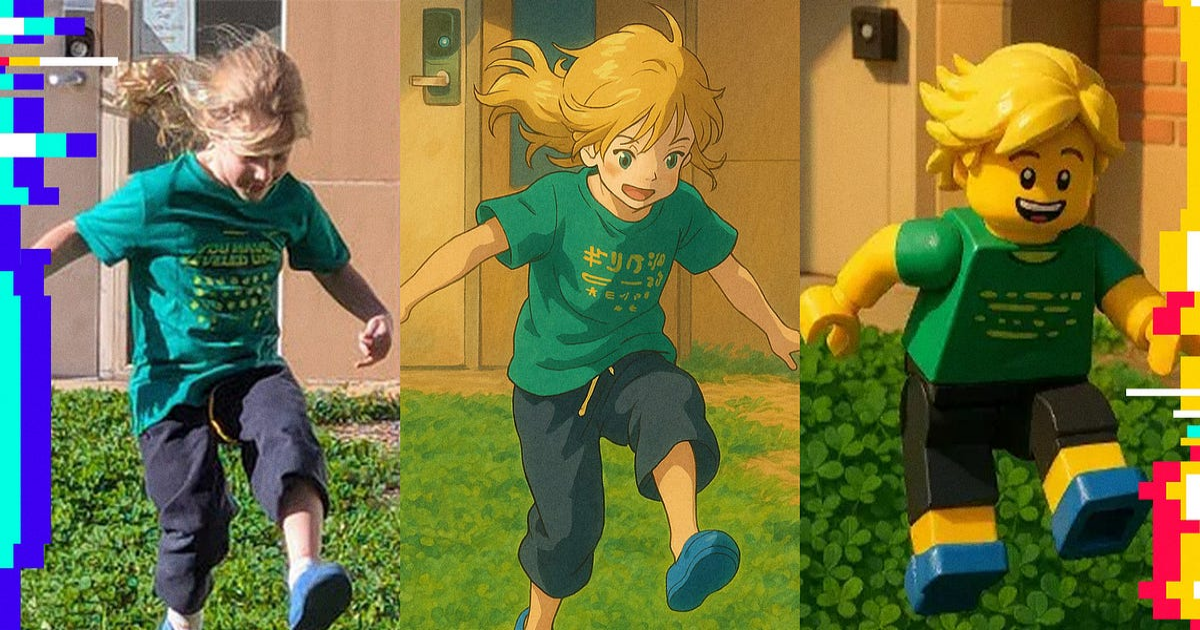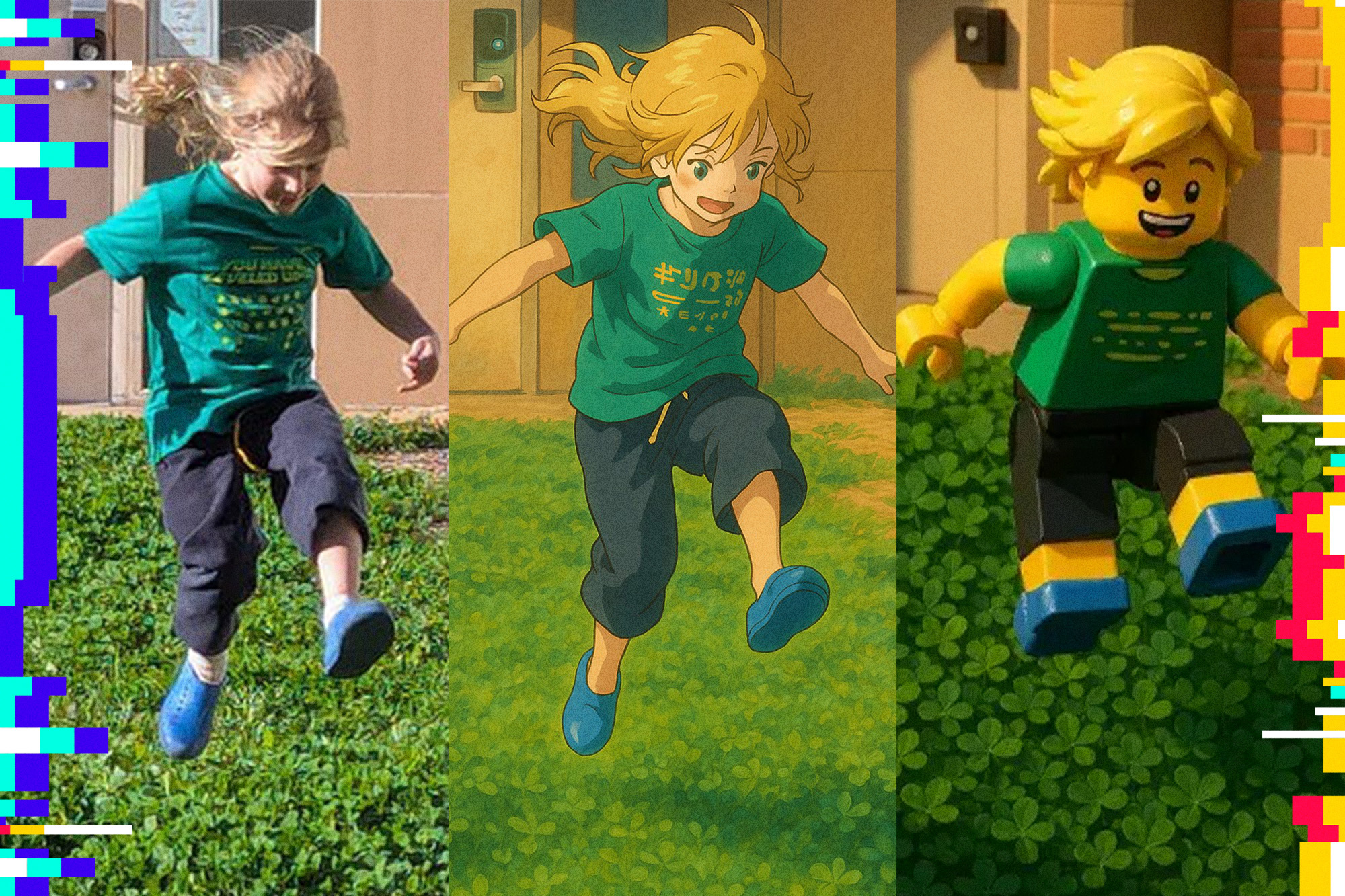TRANSFORMERS My daughter Penny’s Ghiblification, center, and Legoification, courtesy of OpenAI’s shocking new GPT-4o image generator. (photo: Erik Barmack; renderings: OpenAI screenshots)
Erik Barmack writes every other Tue. for paid subscribers; this is a special edition. He recently wrote about AI fan fiction as Hollywood’s next cash cow; the AI animation app that should terrify Hollywood; and how AI reasoning will DOGE Hollywood exec ranks.
When Hayao Miyazaki, founder of Studio Ghibli, works on a project, he’s committed to a long and painstaking process to create worlds that show their beauty on every frame. His movies take decades to develop, and certain scenes can take years on their own to complete. The crowd scene from The Wind Rises, which amounts to four seconds of screen time, reportedly took more than a year to complete. A sequence from Princess Mononoke of a creature burrowing through the Earth reputedly required a year and seven months for Studio Ghibli’s animators to hand draw 5,300 frames.
In many ways, the time required to create such intricate scenes is the point. Every detail matters. Miyazaki’s on the record in expressing his belief that technology represents a threat to the creative process; layered characters and scenes require obsessive and industrious focus.
Yet when OpenAI released its new image generation capabilities within GPT-4o last week, like a moth to a flame, I couldn’t help but try out the new features. I suppose I wanted the sugar high of a personalized Ghibli quick fix.
I was far from the only one: The trend dubbed “Ghiblification” quickly ravaged social media, with people transforming personal photos, memes and even historical images into visuals reminiscent of Studio Ghibli’s art style. Users also generated and shared other iconic visual aesthetics — from Disney, Pixar, Lego, The Simpsons and Dr. Seuss as well as vintage styles such as Rankin/Bass (Rudolph the Red-Nosed Reindeer) — but it was the Ghibli ones that most captured people’s imaginations as you can see from Google Trends data:
A video of Miyazaki, in conversation with Japanese students, where he deemed AI “an insult to life itself,” was also shared widely, but that didn’t stem the tide. A search on X for “#Ghiblistyle” reveals new renderings being uploaded every minute.
Altman’s response to it all was blase, posting “one man’s slop is another man’s treasure” and begging users to slow their image requests because they were melting OpenAI’s servers, never mind that he was melting down the work of one of the greatest artists in the history of cinema.
Internet pundits have been quick to declare the implications for Hollywood, yet Hollywood itself was silent through last week. I know the industry cannot withstand what could be yet another extinction-level event, but if ever there were something that merited a massive response, this is it.
In this issue, I’ll show you:
- Horrifying examples of how much OpenAI is ripping off the craft of animators (including a truly awful use by the White House)
- How shockingly easy it is to produce these images and then turn them into videos
- An AI absolutist’s proposal to do “shot-for-shot remakes of old movies in new visual styles” that needs to be stopped
- Why this should be a “Sputnik moment” for Hollywood
- 4 things the entertainment industry must do NOW to fight back against the appropriation of everything it’s ever created
- Why Scarlett Johansson should be Hollywood’s role model
- The economic implications of letting tech companies run amok
- The even worse cultural implications for the creative community
Get 10% off a group subscription
This morning, I uploaded an image of my daughter, Penny, to GPT-4o.



